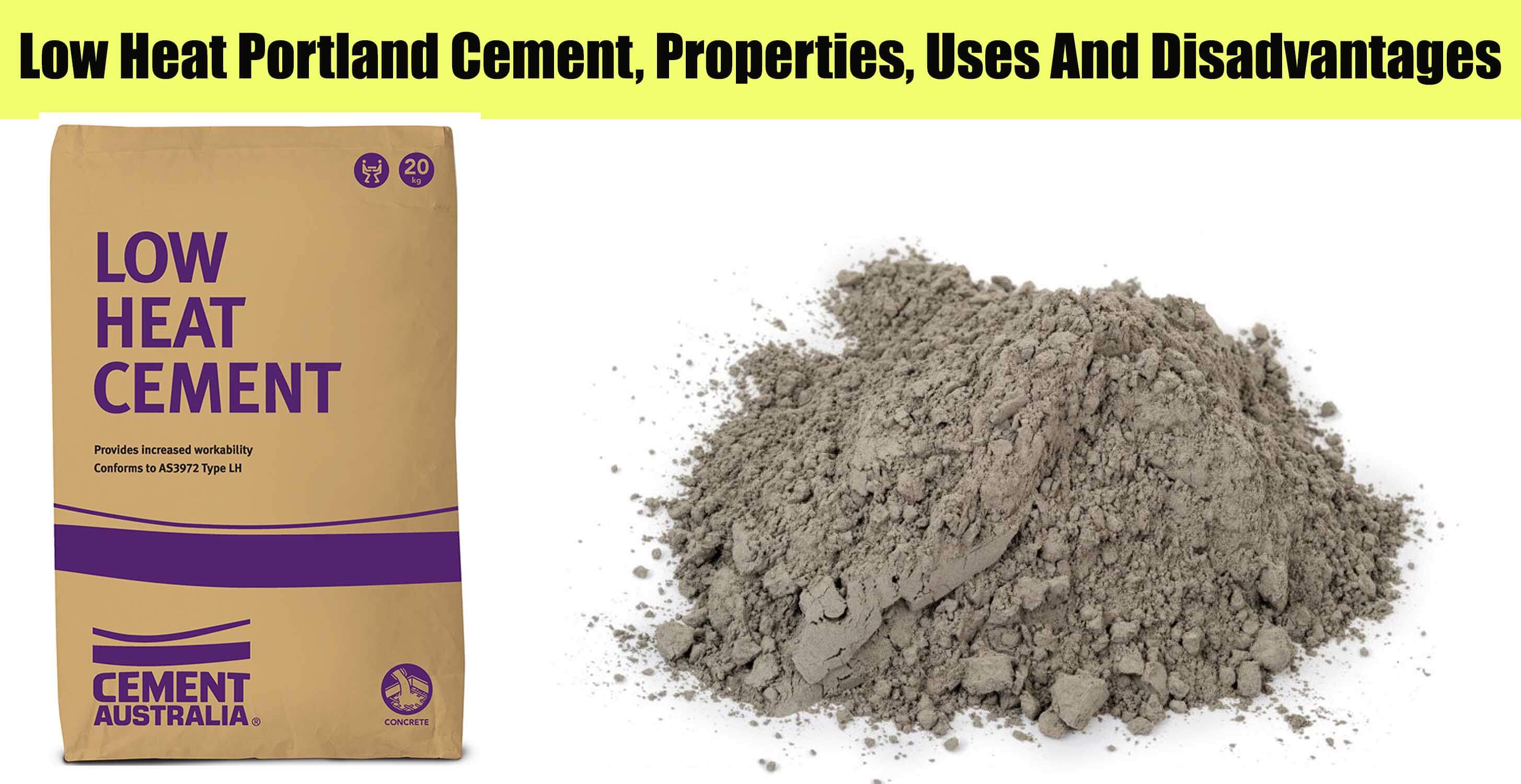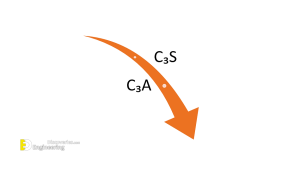Low Heat Portland Cement (LHPC) is Portland cement with lower content of rapidly hydrating compounds, Tri-Calcium Silicate (C3S) and Tri-Calcium Aluminate (C3A). The process of hydration is slow and the consequent rate of heat generation is also low.
It is manufactured from the ingredients of specially selected cement clinker, gypsum and ground granulated blast furnace slag, which result in significantly lower heat generation during the process of hydration than in a typical Portland cement.
Properties of Low Heat Cement
| Item | Standard Value |
| Specific Surface Area | 250 m2/kg Min |
| Initial Setting | 60 minutes Min |
| Final Setting | 12 hours Max |
| Compressive Strength at 7d | 13.0 MPa Min |
| Compressive Strength at 28d | 42.5 MPa Min |
| Breaking Strength at 7d | 3.5 MPa Min |
| Breaking Strength at 28d | 6.5 MPa Min |
| Heat of Hydration at 3d | 230 KJ/kg Max |
| Heat of Hydration at 7d | 260 KJ/kg Max |
Characteristics of Low Heat Cement
1- Low heat of hydration is 20% lesser than that of OPC cement.
2- The amount of water required for hydration is low.
3- High workability is obtained as the concrete is fluidly in nature
4- Good volume stabilisation.
5- Initial strength is low but the high growth rate of final strength.
6- More high technical strength of concrete.
7- Excellent impact erosion.
8- Excellent wear resistance.
9- Lower temperature upward value of heat insulation.
10- Super-high performance of chemical corrosion resistance.
11- Excellent resistance to drying shrinkage.
12- Good resistance to rupture.
Uses of low heat cement
1- It is used in hot weather regions.
2- For mass concreting works such as gravity dam and the thick retaining wall where
reduced heat liberation is important.
3- Due to its superior resistance to both sulphate and chloride salt attack, LH cement may also be used in aggressive sulphate-rich environments or where increased resistance to salt attack is required.
4- Since it good sulphate resistant, It can be used in marine constructions/Coastal areas.
Disadvantages of Low Heat Cement
1- Initial strength gained by using LHPC is lower than that of OPC concrete, but the final strength is the same as that of OPC.
2- This cement cannot be used in cold weather conditions.
3- It is not very suitable for Ordinary structures because the use of cement will delay the time of drying.
4- It will also need more curing.
5- Cost of the cement is higher than that of Ordinary cement.
Because of the slower rate of strength gain, adequate precautions should be taken in their use such as with regard to removal of formwork, etc.
For more information watch this video


